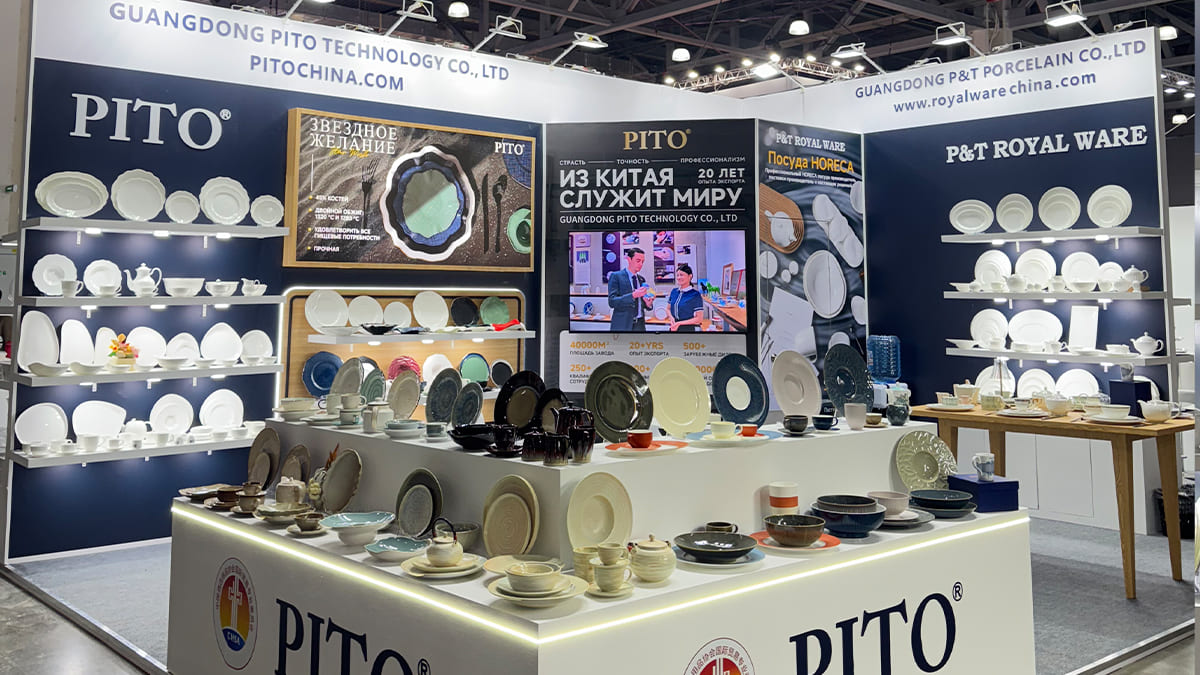
Fuente: pexels
Servir invitados con comidas bellamente hechas en vajillas de porcelana crea elegantes comidas. Sin embargo, Surgen preguntas al preparar las comidas, ya que no está seguro de si la porcelana está bien usarse en electrodomésticos de cocina, como lavavajillas, Microondas y hornos. Los movimientos incorrectos pueden causar daños irreversibles a los preciosos platos de porcelana.. Entonces, Cómo cuidar la vajilla de porcelana? No te preocupes, prestar atención a las siguientes cinco preguntas Tendrás la respuesta.
¿Es seguro el lavavajillas de porcelana?

Fuente: pexels
¿Es seguro el lavavajillas de porcelana y puede lavar porcelana en un lavavajillas??
Antes de revelar la respuesta a estas preguntas, Vale la pena mencionar Cómo funcionan los lavavajillas.
Disparando chorros presurizados de agua caliente y agregando detergente a las placas sucias, Los lavavajillas lavan los restos de comida o bebida. La temperatura del agua caliente puede alcanzar los 140 ° F o 60 ℃ para matar los patógenos rápidamente. Los detergentes duros como la sal de lavavajillas se aplican para ayudar a que la máquina de lavaplatos funcione de manera eficiente. El proceso de lavado básicamente dura 30 a 60 minutos para asegurarse de que los platos estén higiénicamente limpios.
Para ponerlo en pocas palabras, Los lavavajillas dependen de la temperatura alta, Alta presión y detergentes duros para limpiar los platos. Sin embargo, Todos estos factores hacen daño a utensilios de porcelana altamente decorados pero frágiles porque Es probable que sus patrones detallados se desvanezcan bajo la presión del agua. Como consecuencia, Poner placas de porcelana pintadas en el lavavajillas es No es una buena idea.
Por otro lado, La porcelana esmaltada sin estampado decorativo es seguro para poner un lavavajillas. La porcelana moderna se coloca en hornos que pueden alcanzar una temperatura máxima de 2000 ℃, haciéndolo resistente al calor. Además, Alguna porcelana está cubierta con una capa superficial llamada esmalte que evita que se dañe la porcelana., particularmenteplacas de porcelana de color esmaltada que tienen el revestimiento protector adicional. Dichos productos permiten mayores detalles de los diseños mientras se les impide daños..
Estos dos beneficios hacen que los utensilios de porcelana decorativos de alta calidad sirvan como vajilla de porcelana del hotel ya que es amigable con el consumidor con una apariencia atractiva.
¿Es apta la porcelana para microondas??

Fuente: pexels
Algunas placas de porcelana se consideran seguras de microondas, pero no para otras. La vajilla de porcelana se dispara a una temperatura alta entre 2100 ° F y 2500 ° F (o 1,200 ~ 1.400 ° C). No hace falta decir que la porcelana resiste los niveles de alta temperatura en el microondas que alcanza una temperatura máxima de aproximadamente 212 ° F (100ºC). Tal temperatura tan alta puede derretir recipientes de plástico y hacer que los artículos de madera se deforman y se doblen fuera de forma, pero no los productos de porcelana.La durabilidad y la resistencia al calor de la porcelana permiten que se use de forma segura en el microondas sin causar fuego o liberar productos químicos dañinos en su alimento.
Sin embargo, Tenga cuidado con la porcelana decorada con bordes metálicos. Dado que el metal no contiene agua, En lugar de absorber las microondas, refleja las ondas de luz y causa daños, o peor, causa chispas que conducen a explosiones o incendios. Por lo tanto, La porcelana es segura del horno, pero asegúrese de que no haya decoración de metal en él.
¿Es seguro el horno de porcelana??

Fuente: pexels
Algunos de ustedes pueden suponer que poner porcelana en el horno es perfectamente segura según su resistencia al calor.. Técnicamente, Esta idea no es confiable. De nuevo, Si es seguro para el horno depende de tres factores – la fecha del producto, la calidad y la temperatura de la vajilla de porcelana. Placas de porcelana modernas que son producidos por fabricantes de vajillas confiables como ARRIBA O con un símbolo seguro para el horno en su fondo, obviamente son lo suficientemente de alta calidad como para usarse dentro del horno.
Sin embargo, platos de porcelana altamente decorados y piezas vintage puede no ser amigable para el horno. La porcelana que se produjo hace mucho tiempo puede tener grietas de línea en su superficie después de un uso continuo. Con estas grietas, La porcelana se calienta de manera desigual dentro del horno, que es propenso a romper o romper. Además, No ponga porcelana dentro de un horno justo después de que salga del refrigerador. Se romperá debido al cambio repentino de temperatura.
Cómo limpiar & Retire las manchas de la porcelana?

Fuente: pexels
Los alimentos sobrantes o las bebidas de color profundo pueden dejar manchas feas de instalación en su hermosa vajilla de porcelana sin enjuagarlas inmediatamente, como manchas de comida, Manchas marrones y manchas de agua dura. Cómo limpiar las manchas de la porcelana es una pregunta persistente. Aquí hay Tres métodos efectivos Para deshacerse de estas manchas y restaurar sus platos de porcelana manchados a su belleza original!
Pasta dentífrica
Como producto diario, La pasta de dientes se puede comprar fácilmente en una tienda de comestibles cercana. Aparte de ser usado para limpiar el diente, También sirve como un solvente potente para disolver las manchas marrones causadas por el café o el té en la porcelana.. Los siguientes pasos te enseñan cómo eliminar esas molestias imperfecciones.. Remoje de porcelana manchada con suficiente agua tibia para 10 minutos. El agua debe sumergir la porcelana. Aplique un poco de pasta de dientes al área manchada y deje que se sienta durante unos minutos. Luego fregáralo con un paño húmedo (No es fregadores duros como una almohadilla de fregado de metal o cepillos de dientes, ya que pueden dejar rasguños en la superficie) y enjuagarse. Entonces encontrarás que la porcelana vuelve a limpiar. Más, Otra ventaja de usar pasta de dientes radica en que no dejará ningún olor ni causará rasguños adicionales.
Vinagre blanco
Este ingrediente verde natural es particularmente útil para eliminar las manchas de café y té debido a una reacción química. Vinagre, Como un líquido ácido, puede tener una reacción química con el café y las manchas de té. Para eliminar las manchas, Simplemente mezcle una cucharada de vinagre blanco con una taza de agua. Humedecer un paño suave en la mezcla y limpiar la porcelana. Enjuagarse bien.
Zumo de limón
A veces, Es posible que las manchas todavía se adhieran al plato después de limpiarlo con un lavavajillas o un deseo de mano determinado. No te sientas frustrado. Ni su poderosa máquina para lavar platos ni su esfuerzo es inútil. La clave está utilizando un solvente efectivo–zumo de limón. El jugo de limón es un ingrediente natural y verde que es particularmente efectivo cuando se trata de borrar las manchas restantes.. El primer paso es exprimir medio limón vigorosamente para obtener jugo de limón.. Humedecer un trapo de plato limpio bien con jugo de limón y frote las manchas vigorosamente. El método requiere un poco de grasa y tiempo de codo. Repita varias veces y enjuague con agua limpia. Entonces encontrarás que tu vajilla de porcelana se ve como nueva de nuevo.
Cómo quitar los rasguños de los platos de porcelana?

Fuente: pexels
Después de usar porcelana por un tiempo, Puede notar que hay rasguños feos que se adhieren a los platos. Estas obstinadas marcas de rasguños grises parecen imposibles de eliminar después de usar el lavavajillas o lavarse las manos. De hecho, No son rasguños reales Y hay dos métodos para que sus platos vuelvan a impecar nuevamente. En primer lugar, Estas molestas marcas de desgaste son en realidad depósitos de metal. Es cubiertos y cualquier objeto de metal que deje marcas en las superficies de los platos de porcelana debido al desgaste general. Aquí hay Dos enfoques para eliminar fácilmente las marcas de desgastey restaurar el brillo original de la porcelana.
Un limpiador suave
Antes de comenzar a limpiar los rasguños de los platos de porcelana, Primero produzcamos un solvente natural suave. Agregue cuatro cucharaditas de bicarbonato de sodio y dos cucharaditas de agua tibia para hacer una pasta. Aplique la pasta al área manchada. Use un paño suave para fregar los utensilios de porcelana rayados en un determinado patrón y luego enjuáguelos a fondo para eliminar toda la pasta de limpieza. Repita según sea necesario si las marcas no se desvanecen en absoluto, que puede tomar un poco de grasa en el codo. Este método es seguro y efectivo porque el bicarbonato de sodio no dejará una sustancia potencialmente peligrosa. Si no hay bicarbonato de sodio, Prueba una pasta de dientes blanqueadora. También es un sustituto efectivo para eliminar las marcas.
A Detergente potente
Después de probar todos los métodos anteriores, Algunas marcas de rasguños parecen grabadas en las placas de porcelana, ya que están mal rascadas por la gente y los cuchillos. En este caso, Un detergente también es una buena opción cuando te quedas sin paciencia. La efectividad de un detergente potente le permite eliminar 95% de las marcas. Al usar el detergente, Debe tener en cuenta los siguientes puntos. Sigue estrictamente las instrucciones del detergente. Use guantes protectores para evitar que su piel se queme químicos u otro daño. Como el detergente está hecho principalmente de productos químicos, No permita que sus hijos estén expuestos a él en caso de que lo coman accidentalmente. También, Recuerde enjuagar los utensilios varias veces para asegurarse de que no queden productos químicos en las placas.
Conclusión

Fuente: pexels
De la información anterior, Podemos llegar a la conclusión de que la porcelana se puede usar de manera segura con electrodomésticos de cocina generalmente. Si no, No es por la porcelana misma. Se debe a la decoración adicional que puede dañarse por el calor o ser desvanecido, como adornos metálicos y diseños o grietas que son propensas a dañar la vajilla de porcelana.. Aunque la porcelana es duradera y resistente al calor, Deberíamos tener cuidado al usarlo. Será mejor enjuagar y secar la porcelana inmediatamente después de su uso para evitar manchas o rasguños. Si hay de tensía, todavía se mancha o se rasca, Los métodos efectivos mencionados anteriormente están a su disposición.

